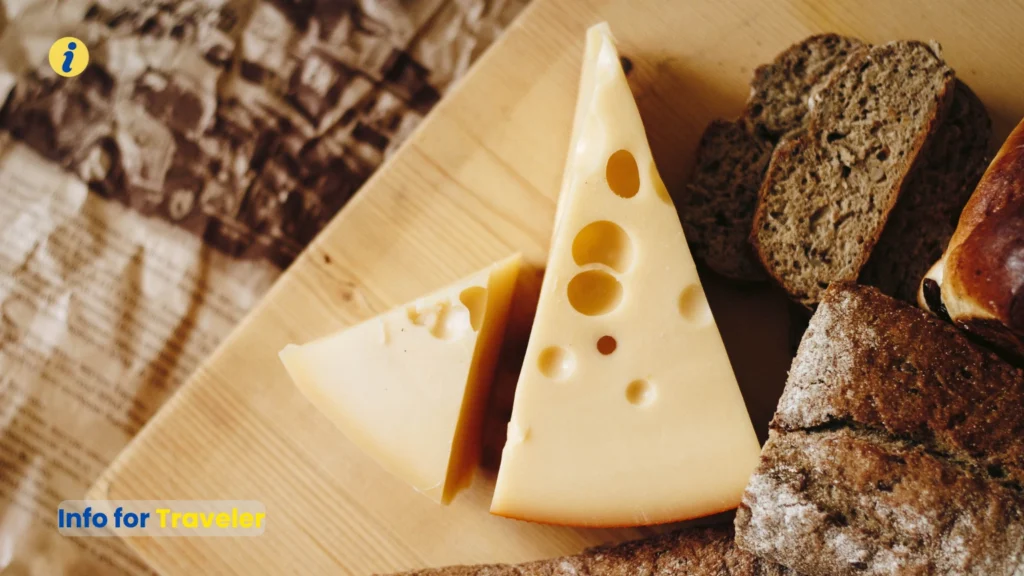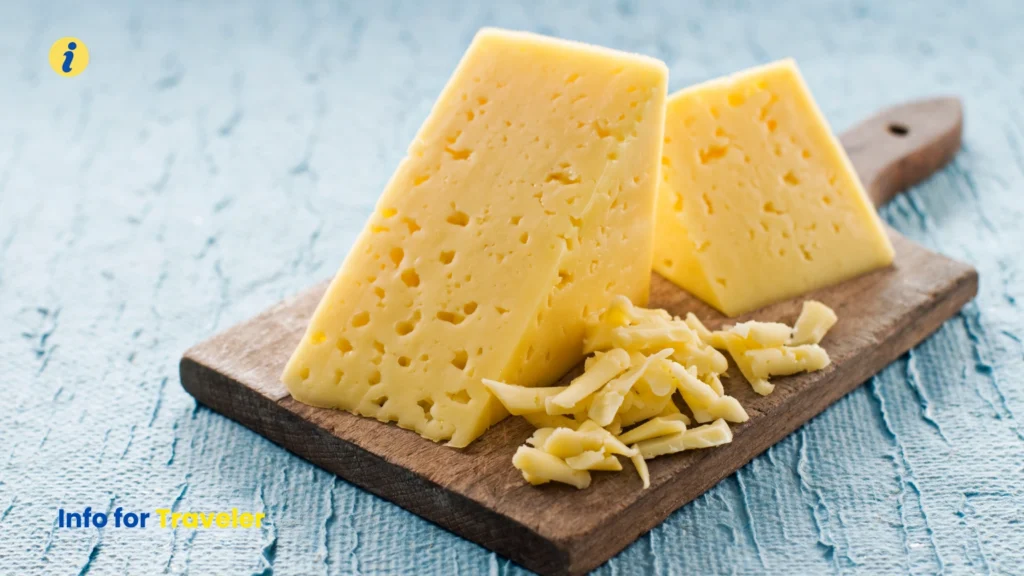Grouse cheese is a rare Scottish artisanal cheese made with wild botanicals like heather and juniper, offering a unique flavor that reflects Scotland’s heritage and natural moorlands.
For cheese enthusiasts seeking something truly exceptional, grouse cheese delivers an adventure in every bite. This rare delicacy transforms ordinary cheese boards into gourmet experiences while providing deep connections to Scottish heritage and sustainable farming practices.
Its limited production and seasonal availability make each encounter with authentic grouse cheese a special occasion worth savoring.
This comprehensive guide explores everything you need to know about grouse cheese, from its fascinating origins to perfect pairing suggestions. Let’s begin by understanding what makes this remarkable cheese so unique and why it deserves a place in every serious cheese lover’s collection.
What Makes Grouse Cheese So Special?
Grouse cheese is special because it combines traditional Scottish cheesemaking with wild botanicals like heather and juniper, creating a rare flavor that reflects Scotland’s heritage and landscapes.
Traditional Scottish Origins
Grouse cheese originates from the remote highlands of Scotland, where local farmers developed unique cheesemaking techniques inspired by the wild grouse that roam these ancient moorlands. These skilled artisans realized that incorporating elements from the grouse’s natural habitat could create cheese with unprecedented depth and complexity.
The name “grouse cheese” doesn’t indicate any bird-derived ingredients but rather celebrates the connection between the cheese and its moorland environment. Traditional producers often age their cheese in caves or cellars located near grouse nesting areas, allowing the natural terroir to influence the final product.
Scottish dairy farmers began experimenting with wild ingredients like heather tips, bog myrtle, and juniper berries during the 18th century. These botanicals, naturally consumed by grouse, impart subtle flavors that distinguish authentic grouse cheese from conventional varieties.
Artisanal Production Methods
Modern grouse cheese production maintains strict adherence to traditional methods while incorporating contemporary food safety standards. Master cheesemakers begin with high-quality milk from grass-fed cattle that graze on moorland pastures rich in wild herbs and alpine plants.
The milk undergoes careful pasteurization before adding specialized bacterial cultures that develop the cheese’s characteristic tang. Rennet addition creates curds that are hand-cut and gently pressed to achieve the proper texture and moisture content.
Wild botanicals are introduced during specific stages of production, either mixed directly into the curds or used during the aging process. Traditional smoking over birch or pine wood adds another layer of complexity that defines authentic grouse cheese flavor profiles.
Understanding Grouse Cheese Varieties

Grouse cheese varieties include heather-infused, smoky juniper, and wild berry types, each offering unique flavors that showcase Scotland’s diverse landscapes and traditions.
Highland Heather Grouse Cheese
Highland heather grouse cheese represents the most traditional variety, featuring delicate floral notes from carefully selected heather blossoms. Producers harvest heather at peak bloom during late summer, ensuring maximum flavor concentration and aromatic intensity.
This variety typically ages for 6-12 months in natural caves where temperature and humidity remain constant. The resulting cheese displays a pale yellow interior with purple-tinged veining from the heather infusion.
Taste characteristics include gentle sweetness balanced by earthy undertones and a subtle honey-like finish. The texture remains creamy yet firm, making it ideal for both cooking applications and standalone tasting experiences.
Smoky Juniper Grouse Cheese
Smoky juniper grouse cheese incorporates crushed juniper berries and traditional wood smoking to create bold, masculine flavors reminiscent of Scottish gin botanicals. This variety appeals to adventurous palates seeking intense, memorable cheese experiences.
Production involves cold-smoking aged wheels over juniper wood for extended periods, allowing smoke to penetrate the cheese gradually. The process requires careful monitoring to prevent over-smoking while achieving optimal flavor development.
The final product exhibits deep amber coloring with a natural rind that develops protective mold cultures. Flavor notes include pine, pepper, and woodsmoke with a clean, crisp finish that pairs excellently with aged spirits.
Wild Berry Grouse Cheese
Wild berry grouse cheese celebrates Scotland’s abundant moorland fruits, incorporating blaeberries, cloudberries, and wild raspberries into the cheesemaking process. These seasonal additions create limited-edition varieties available only during specific harvest periods.
Berries are carefully selected at peak ripeness and either folded into fresh curds or layered during aging. The natural fruit acids interact with the cheese proteins, creating unique textures and flavor combinations.
This variety features attractive berry streaks throughout the pale interior, creating visual appeal that enhances presentation. Sweet-tart fruit flavors complement the creamy base while adding antioxidants and natural colors.
Nutritional Benefits and Health Considerations
Grouse cheese provides rich protein, calcium, and antioxidants from wild botanicals, though its sodium content and use of animal rennet require mindful consumption.
Protein and Essential Nutrients
Grouse cheese provides excellent protein content, typically containing 20-25 grams per 100-gram serving. This high-quality protein includes all essential amino acids necessary for muscle maintenance and cellular repair functions.
The cheese also delivers significant calcium levels, supporting bone health and dental strength. Phosphorus, vitamin B12, and riboflavin contribute additional nutritional value that benefits overall metabolic function.
Wild botanical additions increase antioxidant content beyond conventional cheese varieties. Heather provides flavonoids while juniper berries contribute volatile oils with potential anti-inflammatory properties.
Considerations for Special Diets
Most traditional grouse cheese uses animal rennet, making it unsuitable for strict vegetarians. However, some modern producers offer vegetarian alternatives using microbial or plant-based rennet sources.
Lactose content varies depending on aging duration, with longer-aged varieties containing minimal lactose due to bacterial fermentation. Individuals with mild lactose sensitivity may tolerate well-aged grouse cheese better than fresh varieties.
Sodium levels can be significant due to traditional salting methods. Those monitoring sodium intake should consume grouse cheese in moderation while balancing with low-sodium accompaniments.
Case Studies: Grouse Cheese Success Stories
Case Study 1: Highland Fine Cheeses Revival
Highland Fine Cheeses, a small Scottish creamery, nearly closed in 2015 due to competition from industrial producers. Owner Margaret MacLeod decided to revive her grandmother’s grouse cheese recipe as a last attempt to save the family business.
MacLeod spent months researching traditional techniques and sourcing authentic heather from local moorlands. She partnered with nearby grouse estates to access premium aging locations and seasonal botanical harvests.
The first batch of revived grouse cheese won gold at the International Cheese Awards, generating international attention and orders. Within two years, Highland Fine Cheeses became profitable again, employing six local residents and inspiring other small producers to explore heritage varieties.
Today, their grouse cheese commands premium prices in London’s finest delicatessens and has been featured in Michelin-starred restaurants across Europe. The success story demonstrates how traditional knowledge can create modern market opportunities.
Case Study 2: Urban Restaurant Integration
Chef James Morrison of Edinburgh’s acclaimed restaurant “Heather & Stone” struggled to source authentic Scottish ingredients that would differentiate his establishment from competitors. He discovered grouse cheese through a local farmer’s market and immediately recognized its potential.
Morrison developed a signature dish featuring grouse cheese soufflé paired with venison and wild mushrooms. The dish became his restaurant’s most requested item, attracting food critics and earning a coveted Michelin recommendation.
The restaurant’s success with grouse cheese inspired Morrison to create a dedicated Scottish cheese course featuring five different grouse varieties. This innovation increased average check sizes by 23% while showcasing Scotland’s artisanal food heritage.
Morrison now works directly with three local producers, ensuring consistent supply while supporting traditional cheesemaking practices. His advocacy has helped introduce grouse cheese to international culinary audiences through food festivals and chef collaborations.
Professional Expert Recommendations
Experts recommend choosing seasonally produced grouse cheese, aging it naturally for richer flavor, and serving it at room temperature to enjoy its full complexity.
Master Cheesemaker Insights
Angus Campbell, a third-generation Scottish cheesemaker with 35 years of experience, emphasizes the importance of seasonal timing in grouse cheese production. According to Campbell, the best grouse cheese uses milk from cattle grazing on moorland during late summer when wild plants reach peak nutritional density.
Campbell recommends aging grouse cheese in natural caves rather than climate-controlled facilities. He believes that environmental variations contribute to flavor complexity that cannot be replicated artificially. His award-winning varieties age for minimum 8 months in limestone caves near Stirling.
Temperature consistency matters more than absolute control, Campbell notes. Natural caves maintain steady 50-55°F temperatures while allowing beneficial mold cultures to develop organically. This traditional approach requires patience but produces superior flavor development.
Culinary Professional Perspectives
Chef Sarah Henderson, Scotland’s first female chef to receive a Michelin star, considers grouse cheese essential for authentic Scottish cuisine. She uses different varieties throughout the year, selecting based on seasonal availability and menu requirements.
Henderson emphasizes proper serving temperature, recommending 30-45 minutes at room temperature before service. This allows volatile compounds to develop fully while softening the texture for optimal mouthfeel. She never serves grouse cheese directly from refrigeration.
For wine pairings, Henderson suggests Burgundian Pinot Noir or Highland single malt whisky aged in sherry casks. These combinations complement the cheese’s earthiness while enhancing its subtle botanical notes. She avoids overly tannic wines that might overwhelm delicate flavors.
Perfect Pairings and Serving Suggestions
Grouse cheese pairs well with Pinot Noir, single malt whisky, oatcakes, fruits, and honey, creating balanced flavors that highlight its rich Scottish character.
Wine and Spirit Combinations
Grouse cheese pairs exceptionally well with medium-bodied red wines that complement rather than compete with its complex flavors. Burgundy Pinot Noir offers earthy undertones that harmonize with the cheese’s moorland character while providing sufficient acidity to cleanse the palate.
Highland single malt whisky creates magical combinations, particularly expressions aged in sherry or port casks. The smoky, peaty notes found in Islay whiskies echo the traditional smoking methods used in grouse cheese production.
For white wine enthusiasts, aged Gewürztraminer or white Burgundy provides sufficient body and complexity to match grouse cheese intensity. These wines offer floral notes that complement heather-infused varieties while maintaining balance.
Accompaniment Recommendations
Traditional Scottish oatcakes provide ideal texture contrast while allowing the cheese’s flavors to dominate. Their neutral taste and crispy texture create perfect vehicles for appreciating grouse cheese complexity without interference.
Fresh pears or dried figs offer sweet contrast that enhances the cheese’s savory characteristics. The fruit’s natural sugars balance any saltiness while complementing botanical additions like juniper or heather.
Local honey, particularly heather honey, creates harmonious pairings that celebrate shared terroir. Drizzling small amounts over grouse cheese intensifies floral notes while adding textural interest.
Where to Find Authentic Grouse Cheese

Authentic grouse cheese is available at specialty shops like Harrods and Neal’s Yard Dairy, as well as directly from Scottish producers offering online delivery.
Specialty Retailers and Sources
Authentic grouse cheese requires sourcing from reputable specialty cheese shops that understand proper storage and handling requirements. Leading retailers often maintain direct relationships with Scottish producers, ensuring freshness and authenticity.
Harrods Food Hall in London stocks several grouse cheese varieties, including seasonal limited editions. Their cheese specialists can provide detailed information about specific producers and aging characteristics.
Neal’s Yard Dairy, renowned for British artisanal cheeses, offers carefully curated grouse cheese selections. Their knowledgeable staff provides expert guidance on selection and serving suggestions.
Online Sources and Shipping Considerations
Several online retailers specialize in Scottish artisanal products, offering convenient access to authentic grouse cheese. Proper shipping requires temperature-controlled packaging to maintain quality during transport.
The Cheese Society provides nationwide delivery with specialized packaging that maintains optimal temperature and humidity. Their selection includes detailed producer information and tasting notes.
Direct purchasing from Scottish producers often provides the freshest options while supporting traditional cheesemakers. Many offer online ordering with international shipping capabilities.
Storage and Handling Best Practices
Store grouse cheese in cheese paper at 38–42°F, away from strong odors, and let it rest at room temperature before serving for the best flavor and texture.
Proper Refrigeration Techniques
Grouse cheese requires careful storage to maintain optimal flavor and texture characteristics. Wrap individual pieces in cheese paper or wax paper rather than plastic wrap, which can create moisture problems.
Store wrapped cheese in the vegetable drawer or dedicated cheese compartment where temperature remains consistent around 38-42°F. Avoid storing near strong-smelling foods that might affect delicate flavors.
Allow cheese to breathe by unwrapping and rewrapping weekly if not consumed quickly. This prevents moisture buildup while maintaining proper aging conditions.
Serving Preparation Guidelines
Remove grouse cheese from refrigeration 30-45 minutes before serving to achieve optimal temperature. Cold cheese cannot release its full aromatic potential or achieve proper texture.
Use sharp, clean knives to cut portions, wiping blades between cuts to prevent flavor transfer. Clean cuts maintain visual appeal while preventing unnecessary handling.
Arrange cut portions on neutral-colored plates that won’t compete visually. Wooden boards work well for casual presentations while white porcelain enhances formal presentations.
Seasonal Availability and Production Cycles
Grouse cheese is produced seasonally, with spring offering mild flavors, summer bringing peak complexity, and winter showcasing rich, aged varieties shaped by long maturation.
Understanding Production Timing
Grouse cheese production follows natural seasonal rhythms that affect availability and flavor characteristics. Spring varieties feature fresh, grassy notes from early pasture growth and mild botanical additions.
Summer production incorporates peak heather blooms and wild berry harvests, creating the most complex flavor profiles. These seasonal varieties often command premium prices due to limited availability.
Autumn batches utilize late-season botanicals and prepare for extended aging periods through winter months. These varieties develop deeper, more concentrated flavors during cold-weather maturation.
Planning Purchases Around Seasons
Serious enthusiasts plan purchases around seasonal availability to experience the full range of grouse cheese expressions. Spring varieties provide gentle introductions for newcomers to the category.
Summer releases offer peak complexity and make excellent gifts for special occasions. Limited production means advance ordering may be necessary to secure desired varieties.
Aged varieties become available in winter, providing rich, warming flavors perfect for cold-weather consumption. These mature expressions showcase the full potential of traditional production methods.
The Future of Grouse Cheese
The future of grouse cheese lies in balancing tradition with innovation, using sustainable methods and expanding global recognition while preserving its authentic Scottish heritage.
Innovation and Tradition Balance
Modern grouse cheese producers face challenges balancing innovation with traditional methods. Consumer demand for consistent availability conflicts with seasonal production limitations inherent in wild botanical incorporation.
Some producers experiment with greenhouse-grown botanicals to extend seasons while maintaining flavor authenticity. These innovations require careful testing to ensure traditional character preservation.
Sustainable packaging solutions address environmental concerns while protecting delicate cheese during shipping. Biodegradable materials replace traditional plastic packaging without compromising quality.
Market Growth and Recognition
International recognition of grouse cheese continues growing as food enthusiasts seek unique, authentic experiences. Export markets in North America and Asia show increasing demand for premium Scottish artisanal products.
Food tourism incorporating grouse cheese tastings attracts visitors to Scottish Highland regions. These experiences support local economies while preserving traditional knowledge and skills.
Celebrity chef endorsements and media coverage expand awareness beyond traditional cheese circles. Social media presentations showcase visual appeal while educating consumers about proper appreciation techniques.
Conclusion
Grouse cheese stands as testament to Scotland’s rich culinary heritage and innovative spirit, combining ancient traditions with modern appreciation for artisanal excellence. This remarkable cheese offers discerning food lovers an opportunity to experience authentic terroir while supporting sustainable, traditional production methods.
Whether enjoyed on special occasions or incorporated into sophisticated culinary creations, grouse cheese delivers complexity and character that mass-produced alternatives simply cannot match. Its seasonal availability and limited production make each tasting experience precious and memorable for those fortunate enough to discover this Highland treasure.
If you liked this well-researched breakthrough on Scottish classic cuisine item, you should check this amazing writing, Easy Camping Meals: Save Time & Eat Like a King Outdoors
Frequently Asked Questions
What exactly is grouse cheese and how is it made?
Grouse cheese is a Scottish artisanal cheese infused with wild botanicals like heather and juniper from grouse moorlands, aged using traditional methods passed down through generations.
Where can I buy authentic grouse cheese online?
Authentic grouse cheese is available through specialty retailers like Neal’s Yard Dairy, Harrods Food Hall, and directly from Scottish producers who offer international shipping.
What does grouse cheese taste like compared to regular cheese?
Grouse cheese offers complex earthy flavors with hints of heather, juniper, and wood smoke, creating a more sophisticated taste profile than conventional cheese varieties.
How long does grouse cheese last and how should I store it?
Properly stored grouse cheese lasts 2-3 weeks refrigerated when wrapped in cheese paper and kept in the vegetable drawer at consistent 38-42°F temperatures.
What wines pair best with different grouse cheese varieties?
Burgundy Pinot Noir pairs excellently with heather varieties, while smoky juniper types complement Highland single malt whisky or robust red wines with earthy characteristics.
Is grouse cheese suitable for vegetarians and special diets?
Traditional grouse cheese uses animal rennet, but some producers offer vegetarian alternatives using plant-based rennet while maintaining authentic flavors and textures.
Why is grouse cheese so expensive compared to regular cheese?
Limited seasonal production, wild botanical harvesting, traditional aging methods, and small-batch artisanal techniques contribute to grouse cheese’s premium pricing structure.
Can I make grouse cheese at home or find substitutes?
While complex aged varieties require professional expertise, you can experiment with adding culinary heather or juniper to soft cheeses for similar flavor inspiration.










